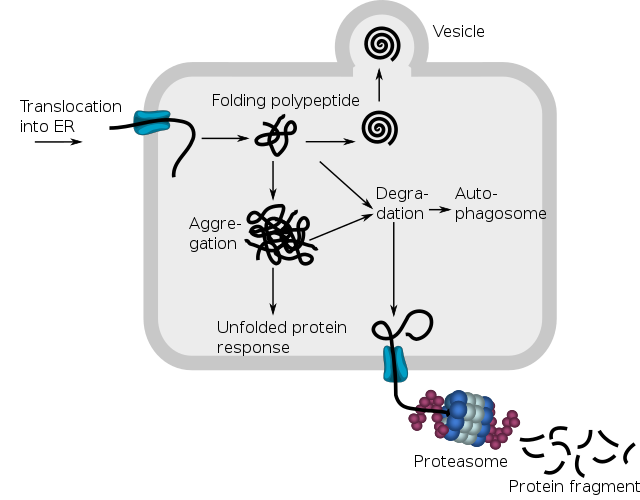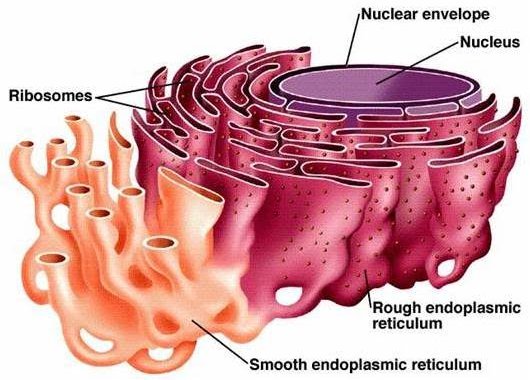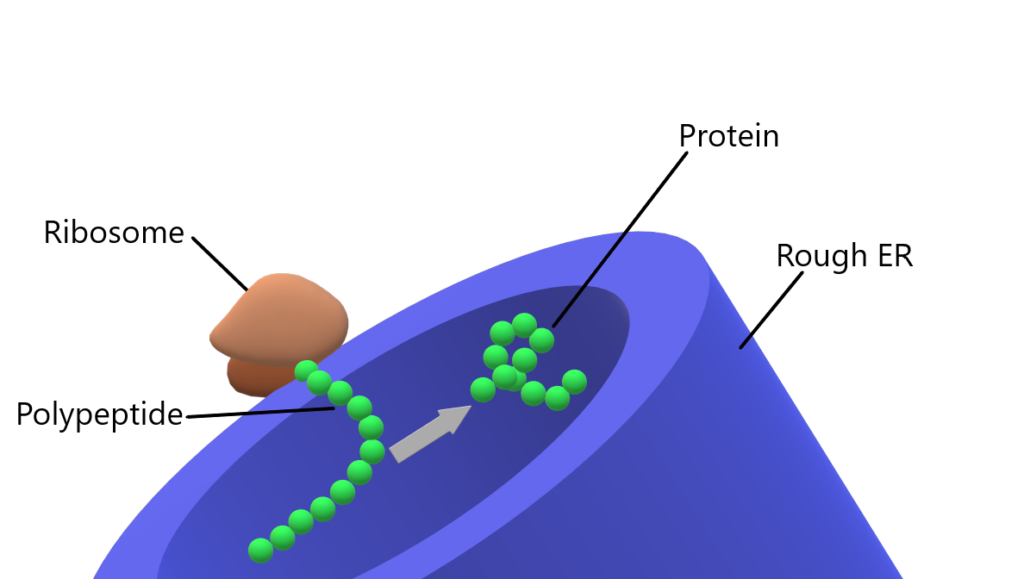INTRODUCTION
- The membranous cell organelles which function in a coordinated manner, constitute an endomembrane system, e.g endoplasmic reticulum, golgi complex, lysosomes and vacuoles.

FUNCTION OF ENDOPLASMIC RETICULUM
- The endoplasmic reticulum (ER) is often referred to as the “factory” or “highway” of the cell, playing a crucial role in protein synthesis, lipid metabolism, and calcium storage.
- However, beyond its fundamental cellular functions, the ER embodies an intriguing architectural marvel and a dynamic hub of cellular activity.
- The endoplasmic reticulum as a bustling metropolis within the cell, with its extensive network of membranous structures resembling a labyrinthine cityscape.
- The endoplasmic reticulum serves as a central communication hub within the cell, orchestrating intricate signaling pathways that regulate diverse cellular processes, from cell growth and differentiation to responses to environmental stimuli.
- The endoplasmic reticulum like a city’s central command center, the ER integrates signals from various cellular components and external cues, coordinating cellular activities with precision and efficiency.
- The endoplasmic reticulum is not merely a passive organelle within the cell but a dynamic and multifaceted entity that embodies the complexity and adaptability of cellular life.
ENDOPLASMIC RETICULUM
- A network of reticulum of tiny tubular structures scattered in the cytoplasm is called the endoplasmic reticulum (ER). It is composed of the following kinds of structures.
(a) Cisternae:- The cisternae are long, flattened, parallel, sac-like, interconnected structures. These are found in cells which are actively involved in protein synthesis. e.g cells of pancreas and brain. They are usually associated with large submit (60 S) of ribosomes.
(b) Tubules:- The tubules are branched or unbranched structures forming the reticular system alongwith the cisternae and vesicles. They are ribosomes and are common in cells involved in lopid and sterol synthesis.
(c) Vesicles:- The vesicles are oval, membrane bound vacuolar structures. They also free of ribosomes. They are abundant in the pancreatic cells and these are the only ER structures found in sermatocytes.
ENDOPLASMIC RETICULUM (Cont….)
- Endoplasmic Reticulum (ER) divides the intracellular space into two distinct compartments:-
(i) Luminal compartment:- It is the internal space enclosed by ER membrane.
(ii) Extra luminal compartment:- It is the space, present outside the ER in the cytoplasm.
TYPES
- On the basis of presence or absence of ribosomes on the surface of endoplasmic reticulum, it is of two types:-
SMOOTH ENDOPLASMIC RETICULUM (SER)
The endoplasmic reticulum which is free of ribosomes is known as SER. It appears as smooth tubular structures. The muscle cells are also rich in smooth type of endoplasmic reticulum which is known as sarcoplasmic reticulum.
FUNCTION OF SMOOTH ENDOPLASMIC RETICULUM:–
(a) It is specialised in the synthesis of lipid and sterods.
(b) Detoxification of drugs and xenobiotics because it is associated with cytochrome P 450.
(c) Associated with muscle contraction by release and uptake of Ca2+ions.
(d) Synthetic products of RER pass onto Golgi complex through SER.
(e) In certain steroid-producing cells, such as those in the adrenal cortex and gonads, the smooth ER is involved in the synthesis of steroid hormones.
(f) It contains enzymes necessary for the conversion of cholesterol into steroid hormones, such as cortisol, aldosterone, estrogen, and testosterone.
Note:- the smooth endoplasmic reticulum plays diverse and essential roles in cellular physiology, including lipid synthesis, detoxification, calcium homeostasis, carbohydrate metabolism, and steroid hormone synthesis. Its specialized functions contribute to the overall function and homeostasis of the cell and are crucial for maintaining cellular health and integrity.

ROUGH ENDOPLASMIC RETICULUM (RER)
- The endoplasmic reticulum bearing ribosomes on its surface is called RER, it gives a rough appearance. They are extensive and continuous with the outer membrane of the nucleus.
- REB contains two types of glycoprotein i.e Ribophorin-I and Ribophorin-II for attachement of 60S subunit of 80S ribosome.
FUNCTION OF ROUGH ENDOPLASMIC RETICULUM:-
(a) Ribosomes are the site of protein synthesis and thus, RER are present in the cells which are actively involved in the protein synthesis and secretion.
(b) It provides precursors of enzymes for the formation of lysosomes in Golgi complex.
(c) It gives rise to smooth endoplasmic reticulum.
(d) It ensures the quality control of newly synthesized proteins and facilitates their proper localization and function within the cell.
(e) Additionally, the rough ER’s role in protein synthesis and processing underscores its significance in cellular homeostasis, growth, and adaptation to changing environmental conditions.

- The endoplasmic reticulum is a complex network of membranous tubules and flattened sacs located in the cytoplasm of eukaryotic cells. Its main functions include protein synthesis, lipid metabolism, calcium storage, and detoxification.
- The rough ER (RER) has ribosomes attached to its surface, giving it a “rough” appearance, while the smooth ER (SER) lacks ribosomes. The RER is primarily involved in protein synthesis and processing, while the SER is involved in lipid metabolism, detoxification, and calcium storage.
- The endoplasmic reticulum, particularly the rough ER, is a site for protein synthesis. Ribosomes attached to the RER membrane synthesize proteins, which are then translocated into the ER lumen for further processing, folding, and modification before being transported to their final destinations within or outside the cell.
The endoplasmic reticulum, especially the smooth ER, is involved in lipid metabolism, including the synthesis of phospholipids, cholesterol, and steroids. It also participates in the metabolism of fatty acids and the synthesis of lipoproteins and lipid droplets
- The endoplasmic reticulum contains calcium pumps and channels that regulate the concentration of calcium ions (Ca^2+) within the cell. It stores calcium ions in its lumen and releases them in response to cellular signals, thereby playing a crucial role in calcium signaling and various cellular processes such as muscle contraction and cell communication.
- The endoplasmic reticulum, particularly the smooth ER, contains detoxification enzymes, such as cytochrome P450 enzymes, which metabolize and detoxify harmful substances and drugs within the cell. This detoxification process helps protect the cell from chemical damage and maintain cellular homeostasis.
- Dysfunction of the endoplasmic reticulum, such as impaired protein folding or lipid metabolism, can lead to the accumulation of misfolded proteins, oxidative stress, and disturbances in cellular homeostasis. This can contribute to the pathogenesis of various diseases, including neurodegenerative disorders, metabolic syndromes, and certain types of cancer.
- Yes, the endoplasmic reticulum represents a potential target for therapeutic interventions in various diseases. Modulating ER stress responses, enhancing protein folding capacity, or targeting specific ER-related pathways may offer potential therapeutic strategies for treating diseases associated with ER dysfunction.